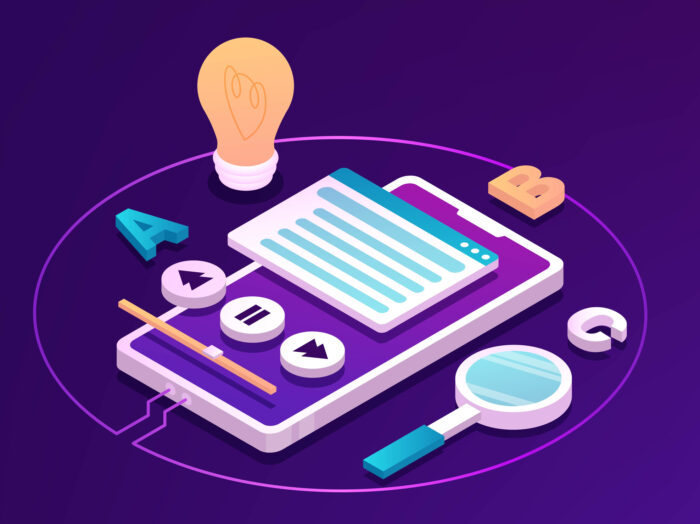What is Adoption Rate?
Adoption rate is a quantitative metric to measure the behaviour of users. It quantifies the proportion of customers actively engaging with your product, rather than those who only downloaded it or activated it. During the user adoption process, individuals begin to regularly engage with and use a product as intended. It’s the transition from initial awareness and sign up, to becoming an active and committed long-term user. Adoption rate is the quantitative indicator that is used to measure the success of this process.
A high adoption rate is a sign that the product or service is successful and people are finding value in using it. A low adoption rate signifies that users are failing to move from their initial awareness of the product, to becoming long-term users.
There are lots of things that can influence whether a product has a high or low adoption rate. If users find the product difficult to use, hard to understand, don’t see the value of it or are put off by the price or the complexity of the offering then they are unlikely to adopt it. If users understand the value of the product to them, find it intuitive and easy to use, enjoy the user experience and see how it can be incorporated into their workflow or routines, the adoption rate is likely to be high.
How to Measure Adoption Rate
You can measure adoption rate by collecting both quantitative and qualitative data to provide a holistic view of product adoption. Quantitative data like user metrics and engagement rates, gives you the numbers to track trends and measure performance objectively. Whereas qualitative data – things like user feedback and usability insights – offers deeper context and understanding of user behaviours and preferences. By combining both types of data, you gain a comprehensive understanding of user adoption patterns, allowing you to identify areas for improvement and make informed decisions to optimise adoption strategies.
Qualitative data should include things like user feedback, behaviour analysis and customer support interactions. You can gather insights from user surveys, interviews and feedback forms to understand what encourages your customers to adopt and where there are barriers to adoption. Useability testing and user journey analysis can also identify user interactions and highlight the pain points which affect how successful your adoption rate is.
You can also look more deeply at the interactions your customers have with your customer support team – the kinds of problems they seem to need help with and what they would like to see improved.
5 Product Adoption Rate Metrics
When you measure your adoption rate, there are several different metrics you can use depending on what kind of insight you are looking to gain. Different metrics provide different perspectives on how a user engages with a product.
Each metric captures different aspects of adoption, such as the number of new users, how often they use it, how long they spend with the product, or how deeply they engage with it. By looking at multiple metrics, you gain a more comprehensive understanding of adoption dynamics and can identify patterns or trends that might not be apparent when looking at a single metric on its own.
Different metrics can also serve as checks and balances for each other, providing validation and cross-verification of adoption trends. If one metric shows a significant increase or decrease, comparing it with other metrics can help you understand if the change is consistent across different aspects of user behaviour or if it’s an anomaly.
1. Number of New Users
This is a straightforward metric that measures the total number of new users who have adopted the product or service within a specific time period. You will need to decide what your definition of ‘adopted’ is before you start measuring – is it the number of users who have applied for a trial? Made payment? Or committed to a longer term plan? These figures let you know how well your product base is growing.
2. Activation Rate
Activation rate measures the percentage of new users who complete a specific action or set of actions that indicate they have gained value from the product and are likely to continue using it. Again, you will need to have defined your activation criteria for this to be a valuable metric. Is it a particular milestone that they need to reach? Is it completing the onboarding flow? Is it committing to a longer term contract? What does meaningful activation look like with your particular product?
3. Retention Rate
Understanding how many of your users continue to use the product over time is an important metric. There’s no point pouring resources into acquisition and adoption if your users don’t stick around long-term. This metric provides insights into user loyalty and satisfaction, as well as how effectively your product engages them.
4. Usage Frequency
Usage frequency measures how often users interact with the product within a given time frame. It helps assess user engagement and habit formation, as well as the perceived value of the product.
Knowing how often users interact with your product within a particular time period can help you understand user engagement and how much they value the product. If they are using it regularly, it’s an indication that they are finding value in it and are integrating it into their regular routines or workflows.. If they don’t use the product very often, it could indicate lack of engagement and may be a sign they find it too difficult, don’t understand how it can be of value to them or simply don’t like it.
5. User Feedback and NPS
Net Promoter Score (NPS) is used to measure customer loyalty and satisfaction by asking “On a scale of 0 to 10, how likely are you to recommend this product to a friend or colleague?”. The number of users giving a low score are subtracted from users giving a high score to calculate the NPS. A high NPS indicates that your users are satisfied with the product, whereas a low one can be cause for concern. A lot of industries use NPS to gauge customer sentiment and loyalty.
5 Tips to Increase Adoption Rate
1. Know who you’re trying to reach
You need to understand who it is you want to adopt your products, what their needs and pain points are and how to educate them in such a way that they understand the value of your offering to them specifically.
Even knowing which department they work in – HR, Legal, Marketing, Sales, Service etc – can help you provide tailored support and education. Not all features or functionalities may be relevant or useful to every user. Being clear on who you are trying to help lets you identify which features are most important to them and prioritise accordingly. This ensures users are introduced to the most relevant aspects of the product or service during the adoption phase.
2. Consider your pricing
If a product is expensive it may discourage potential users. Offering discounts, promotions, or free trials can enhance the product’s appeal and attract more users.
It’s important to think about the length of time that users will receive a reduced rate – on one hand, it needs to be long enough for them to fully experience your product and understand its value to secure their commitment and adoption. On the other hand, you also need to create a sense of urgency that encourages your users to take action and adopt your product sooner rather than later. On an ongoing basis, you could consider offering flexible pricing plans to cater to different customer segments. Tiered pricing structures can help attract customers at various budget levels.
3. Continue marketing through the adoption process
Once users have signed up to use your product, it’s still beneficial to use marketing to reassure them they have made the right decision and encourage more in-depth adoption. You can do this by leveraging social proof – showcasing testimonials, case studies and reviews from satisfied customers to build trust and credibility. You could also use a mix of digital marketing channels like your social media platforms, content marketing on your website or email campaigns to educate newly-active users about everything your product has to offer.
4. Gather feedback
Listen to customer feedback and use it to improve your product. Regular updates and enhancements based on user input can help keep existing customers engaged and attract new ones. User feedback is also integral to the iterative development process. Continuously gathering feedback allows you to iterate on your product incrementally, making small adjustments based on user input and testing their impact before implementing larger changes. This iterative approach promotes continuous improvement and ensures that the product evolves in alignment with user needs and preferences.
5. Educate your audience
Educating users about the product helps them understand its features, benefits, and how it can address their needs or solve their problems. It also makes it more likely that they will see how the product is valuable to them, encouraging adoption.
Creating a compelling value proposition is the key to clearly communicating the uniqueness of your product and the value it offers users. You need to succinctly communicate how your product addresses your users’ needs and why it stands out in a crowded marketplace.
Education also has the ability to reduce friction at this critical point. It’s natural that new users may encounter obstacles or uncertainties when trying out a new product. Educating them about how to use the product effectively reduces friction by providing guidance and support. This can include tutorials, user guides, FAQs, and other resources that help users navigate the product more easily, leading to smoother adoption.
With education comes confidence in the product. When users feel that they are using the software competently, they are more likely to engage with it confidently and explore its full range of capabilities, leading to deeper adoption and usage over time.
To learn more about how Omniplex Guide can help you improve product adoption, get in touch or book a free product tour.




